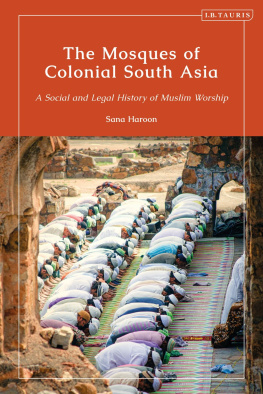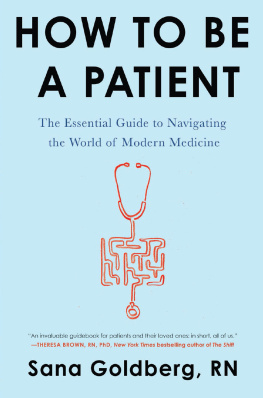Foreword
We are facing a history book that speaks about the suffering and martyrdom of a Church, which has not been defeated by the Communist atheism that chained Romania between 1945-1989. The facts described here come to answer pertinent questions that any good faith reader asks to find the truth: How did the Romanian Greek Catholic Church survive during the Communist persecution? What were the reasons for being persecuted? Who are the heroes who have not betrayed their beliefs? How did Communism attempt to eliminate Catholicism from the Romanian society, knowing that this Church stood at the base of the modern Romanian nation?
The present book, titled The Forbidden Church written by Mr. Silviu Sana Ph. D., comes to answer these pertinent questions, In light of the fact that in the nearly 50 years of the Catacombs, the Greek Catholic Church continued to exist, being a landmark of Christian principles among Romanians, in a society that denies Christianity and even the existence of God.
In the pages that follow, the readers will discover sequences from the recent history of the Greek Catholic Church in northwestern Romania. A first chapter is dedicated to the life of the Blessed Bishop Valeriu Traian Frentiu beatified on June 2nd, 2019 by Pope Francis in Blaj. The figure of this remarkable hierarch is highlighted, before and after 1948, when all Romanian Greek Catholic bishops took the road of prisons, giving their lives for the faith. The portrait of Valeriu Traian Freniu, with all his spiritual and materials achievements, in Lugoj, Oradea, and Blaj, overlaps with the image of the Greek Catholic Church in the new reality of the Romanian State, with joy and difficulties, and especially with the persecution unleashed by Communists against the Catholic Church after 1945. This first topic binds the second chapter of the book, namely the one dedicated to an American priest, Fr. Alexandru Raiu, who, because of his political and religious beliefs, came to the attention of the Secret Police Securitatea , being 3 times arrested until the year 1948. The third chapter of the book is dedicated to Bishop Iuliu Hirtea, the successor of Bishop Frentiu, who was ordained in secret (July 1949) to lead the Eparchy of Oradea. The thread of the action shows how Bishop Hirtea was pursued by the Securitates informers, both in freedom and in detention, and despite this harassment, he continued to fight for his church. The fourth chapter presents the situation of the Church in a report made by an Orthodox priest. The reality revealed by a report made by the Orthodox vicar Dr. Augustin Paul in 1957, indicates that, despite the arrest of bishops and of those opposing the forced unification, the Greek Catholic Church continues to exist in different forms, both in the souls of those who were forced to become Orthodox and also of those who practiced their faith in silence. A final chapter is dedicated to the cultural heritage of the Eparchy of Oradea between 1948-1950, namely the confiscation of the diocese library by the communist state, the entire collection (the Transylvanian School manuscripts, the diocese archive and the collection of old and rare book), being scattered and divided into various archives and public libraries in Romania.
This work, drawn up after the rigors of the scientific research of the historical writing, successfully completes the series of historical works dedicated to the Greek Catholic Church in Romania. We highly recommend this interesting and captivating reading to all who love history and seek the truth, this book being a testament of courage and faith for future generations.
Oradea, September 9, 2019
Virgil Bercea
Bishop of Oradea Mare
To the Readers
On June 2, 2019, in Blaj, Pope Francis celebrated an important event for the Greek Catholic Church from Romania, namely, the beatification of the seven Greek Catholic bishops, martyred under the Communist regime. Historian Denis Deletant said the following about them: These bishops have proven remarkable dignity, courage, and fidelity to their faith. Thus, they have become role models for priests and believers, with the Greek Catholic Church continuing to exist even though it was banned and persecuted by the Communist regime.
The present book is a tribute to the seven bishop-martyrs, and is one of the few historical works outside Romania that treats the persecution of the Greek Catholic Church from Romania by the communist regime, more specifically talking about the north-west part of Romania, namely the Greek-Catholic Eparchy of Oradea and the Greek-Catholic Eparchy of Baia Mare.
Suggestively titled The Forbidden Church. Greek Catholics from north-west of Romania under the Communist regime (1945-1989). I, the present book opens the series of restitutions that talks about the history of the Greek Catholic Church of Romania during the Communist regime, addressing both specialists and the general public.
Consisting of five chapters, the Forbidden Church is based on research in 13 archival funds from Romania, Hungary, and Italy, with 24 edited sources, 35 specialized works, and 57 articles. The 5 chapters are newer versions of articles published in Romanian. The first chapter is dedicated to the Blessed Martyr, Bishop Valeriu Traian Frentiu, and pursues his life and work throughout the entire period of the episcopate, but especially his martyrdom between the years 1948-1952. He was arrested by the Securitate on October 28, 1948, and secluded in the Dragoslavele concentration camp, in the Caldarusani Monastery which had become a center of reclusion, and after 1950 in the penitentiary from Sighetul Marmatiei. The second chapter speaks about the first period of the martyrdom of Fr. Alexandru Ratiu, an American priest, born on May 4, 1916, in Scalp Level, Pensylvania, USA. He was one of the first priests who offered resistance to the Communist regime. Celibate priest, with studies in Oradea and Rome, Fr. Ratiu was loved by the students and appreciated by the believers from Simleu and Oradea. His attitude of opposition against the Communists during 1945-1948, reveals that the Romanian Greek-Catholic Church was hit immediately after the Soviet Army entered Romania. The third chapter is dedicated to the one who took over the diocese of Oradea during the Communist period, namely professor Iuliu Hirtea. Thereby, on July 28, 1949, the priest Iuliu Hirtea was secretly consecrated and appointed Bishop for the Greek-Catholic Eparchy of Oradea. He had previously been arrested in 1947, and then released from prison on February 12, 1949. In 1953, he was arrested again for clandestine Greek-Catholic activities and wrongfully convicted to 12 years in prison for crime of high treason and espionage in favour of Vatican. After being released in 1964, the Securitate continued his surveillance, the set of measures being well planned; whoever contacted him could be suspected of clandestine Greek-Catholic activity. Having an extremely powerful personality, doubled by an act of almost insane courage, but in the meanwhile manifesting plenty of caution, Hirtea affronted the communist authorities, continuing his activity of bishop more subtly, and without hiding his religious convictions. He was aware of being under surveillance, but he defied the secret police with bravery, even though, a Securitate officer visited him at home, almost every month. The informative notes written during Hirteas detention (1953-1964) and, then, over the freedom period (1964-1978), abound in information pointing out his religious activities (he celebrated Masses in believers homes, consecrated priests, and officiated baptism ceremonies), led scientific discussions on problems of history and theology and even publicly defended the freedom of the Greek-Catholic cult. The plans of measures of the secret police repeatedly attempted to denigrate the bishop, but it was in vain. His conviction remained the same for his entire life, many times being confessed in front of the Securitate s officers that: I have never developed and I do not engage in any activity that is hostile to the State [and I] believe that You, the communists, will give us the freedom of the cult. The fourth chapter entitled Greek-Catholics under the Orthodox Church. The unification from 1948 in dr. Augustin Pauls report from 1957 shows the real situation of the deaneries and parishes within the Greek-Catholic Eparchies of Oradea-Mare and Baia Mare, enclosed after December 1, 1948, in the Romanian Orthodox Church, more exactly in the Orthodox Episcopacy of Oradea. Orthodox Vicar Augustin Pauls report, former Greek-Catholic priest, describes in detail the situation of the so-called Unification in the deaneries and parishes of the Eparchy, 9 years after the suppression of the Greek-Catholic Church. The events presented by the Orthodox vicar are related to the public manifestations of the Greek-Catholic believers and priests from 1956, which, on one hand, were evident signs that the Greek-Catholic Church was manifesting its existence despite its prohibition by the communist-atheist State and, on the other hand, they startled the alarm to the higher churchly and political authorities in Bucharest, warning them that it was necessary to make a change regarding the annihilation measures of the forms of resistance exerted by the Greek-Catholics. The fifth chapter presents the Diocesan Library of the Greek Catholic Eparchy of Oradea kept until 1948 in the episcopal palace, with a history that is quite complicated, since, during 1949-1950, it was divided among different public institutions (libraries and archives) protected by the Communist authorities.












